Back in March, I wondered “Why do we care about COVID-19 deaths more than driving-related deaths?” and closed with
What is the answer? Why do we accept that hundreds of thousands of Americans will die in the next 10-20 years because of our failure to invest in engineering and infrastructure today, but we can’t accept that up to hundreds of thousands of Americans will die in the next year because we didn’t do a sufficiently thorough shutdown?
Is it too soon to start asking what we could do to save lives if we invested coronapanic-scale money on something other than coronapanic?
“For Traffic Safety, Roundabouts Run Circles Around Stoplights” (Strxur):
Jim Brainard, the city’s mayor since 1996, has made roundabouts Carmel’s most characteristic feature. Within the 48-square-mile city of 100,000, located just northwest of the state’s capital of Indianapolis, Brainard has built 132 roundabouts. He’s also become America’s—and perhaps the world’s—most adamant cheerleader for roundabout adoption.
“Roundabouts have reduced traffic fatalities by 90% in Carmel,” said Brainard, a lawyer by training. “The U.S. average fatality rate per 100,000 people is 14. It tends to be higher in suburban areas because the roads are built wider for faster speeds. Indianapolis has done a little bit better than normal—11.7 per 100,000. The average in Carmel is two.”
Now that the U.S. will have to give up on public transport #BecauseCorona, is there hope for getting more flow through our existing road network to accommodate the existing 330 million plus the next 100 million immigrants?
The smaller the circles are, the safer they become. “We have higher crash rates in our double lane roundabouts then our single lane roundabouts,” Brainard said. “But they’re still a vast improvement over stoplights. We can move 50% more cars per hour through roundabouts than we could through stoplights. If you have constant flow, you don’t have to add more lanes.”
These can’t be retrofit easily to cities, but if the future of America is suburban (#BecauseCorona), maybe this is part of the answer!
From the Irish Museum of Modern Art, Dublin, 2019, evidence of a bad traffic light encounter?
The exhibits on the bad shape that the world was in, circa June 2019.
Do we credit these artists for prescience? The “Vague Anxiety” is no longer vague! “Acts of Mourning” is no longer a metaphor, as only 99.965 percent of the Irish people remain alive, the remaining 0.0035 percent having been killed by Covid-19.
From the bookstore, is it possible this would be considered insulting by those who call themselves “feminist”?
The rest of the bookstore was unobjectionable, except to those who had faith that public-key encryption would enable a secure Internet.
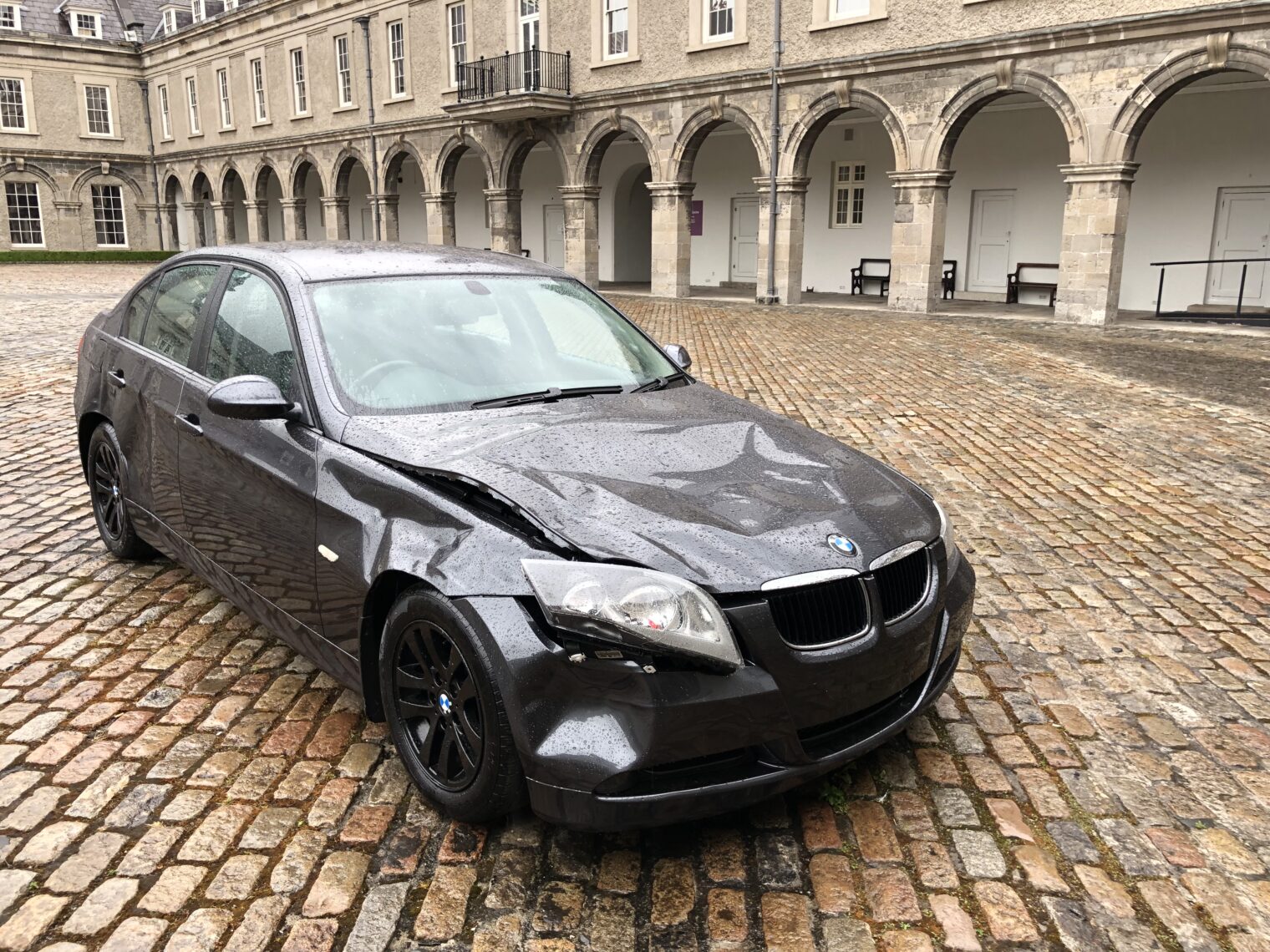
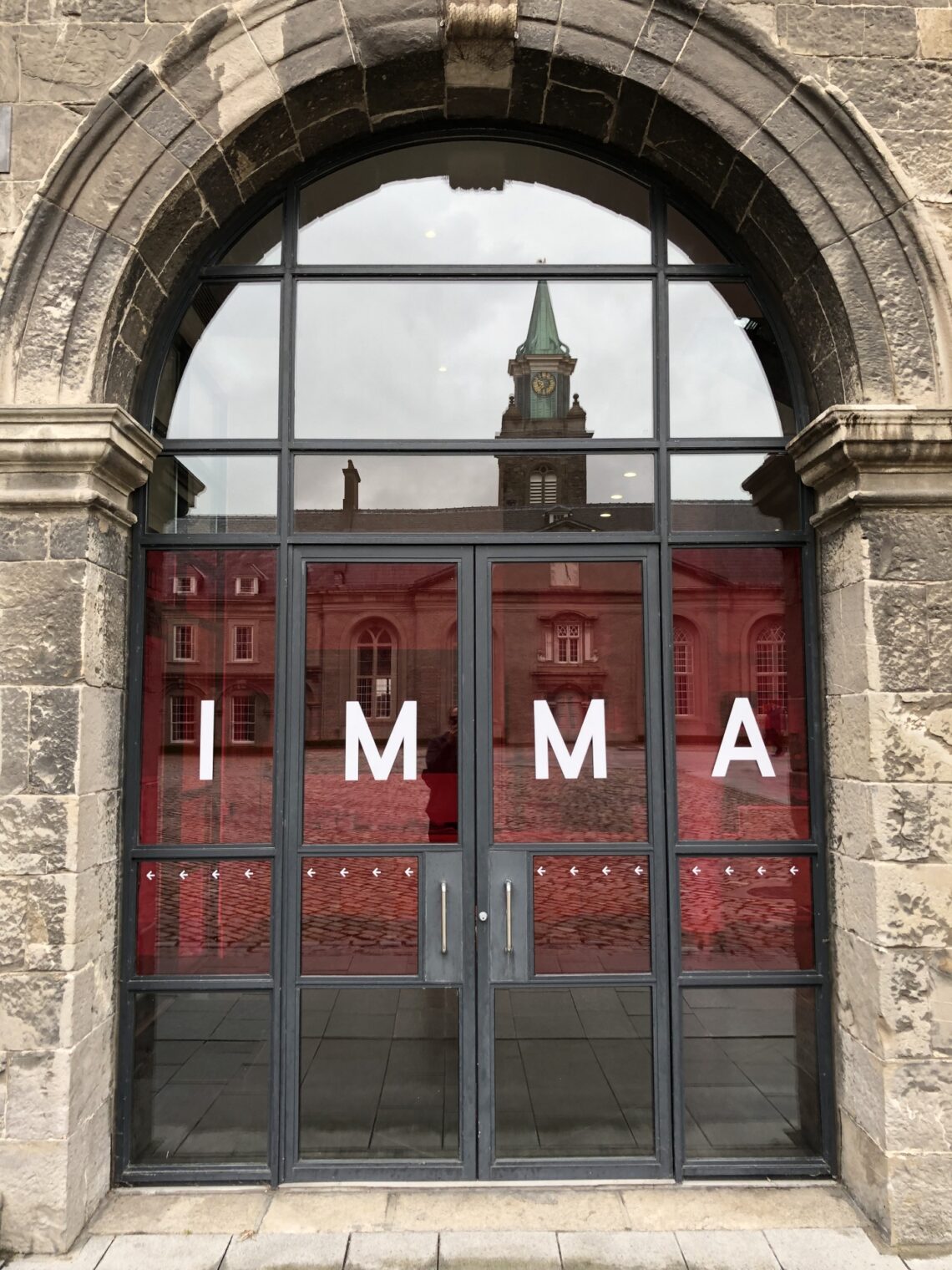
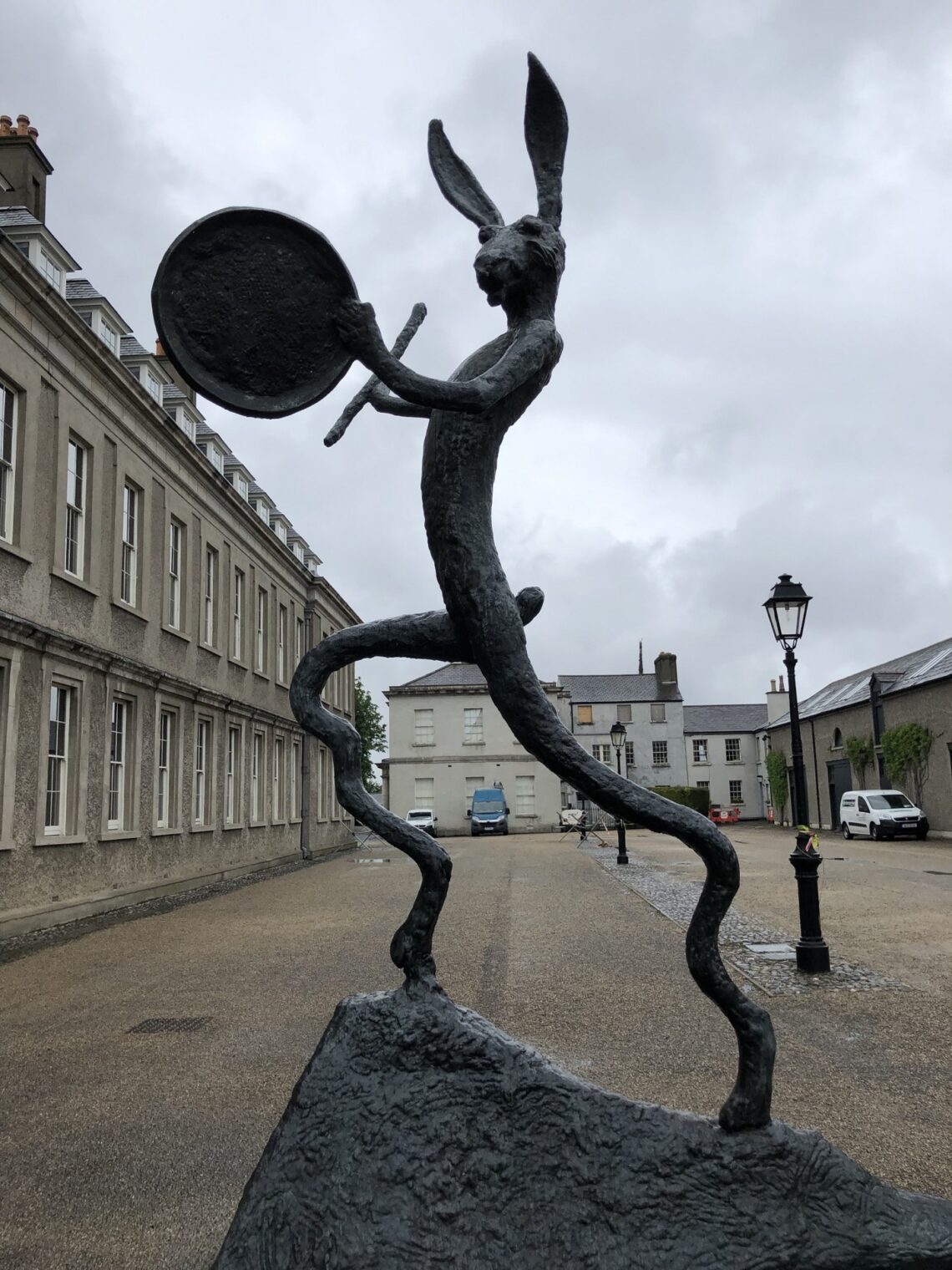
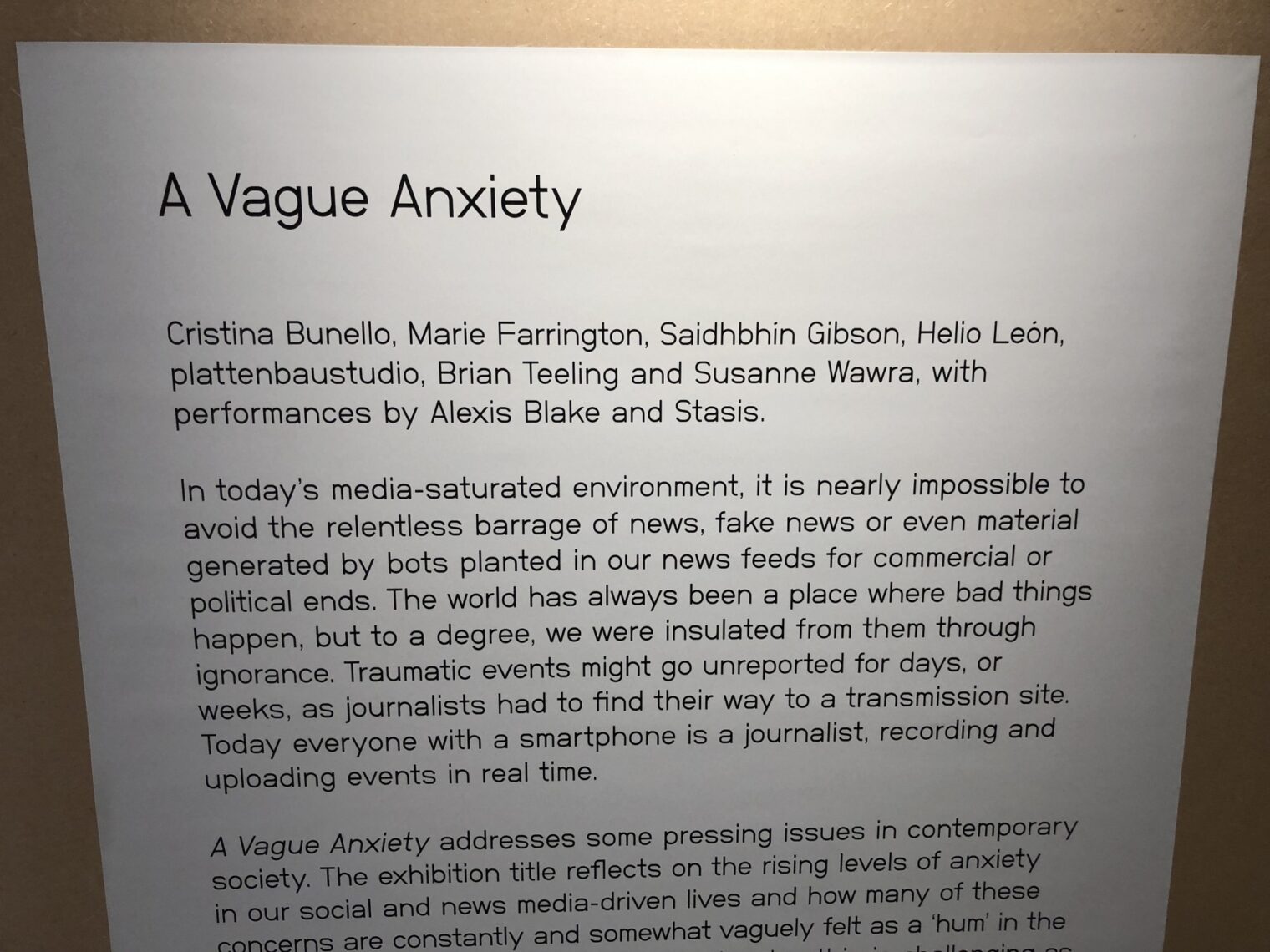
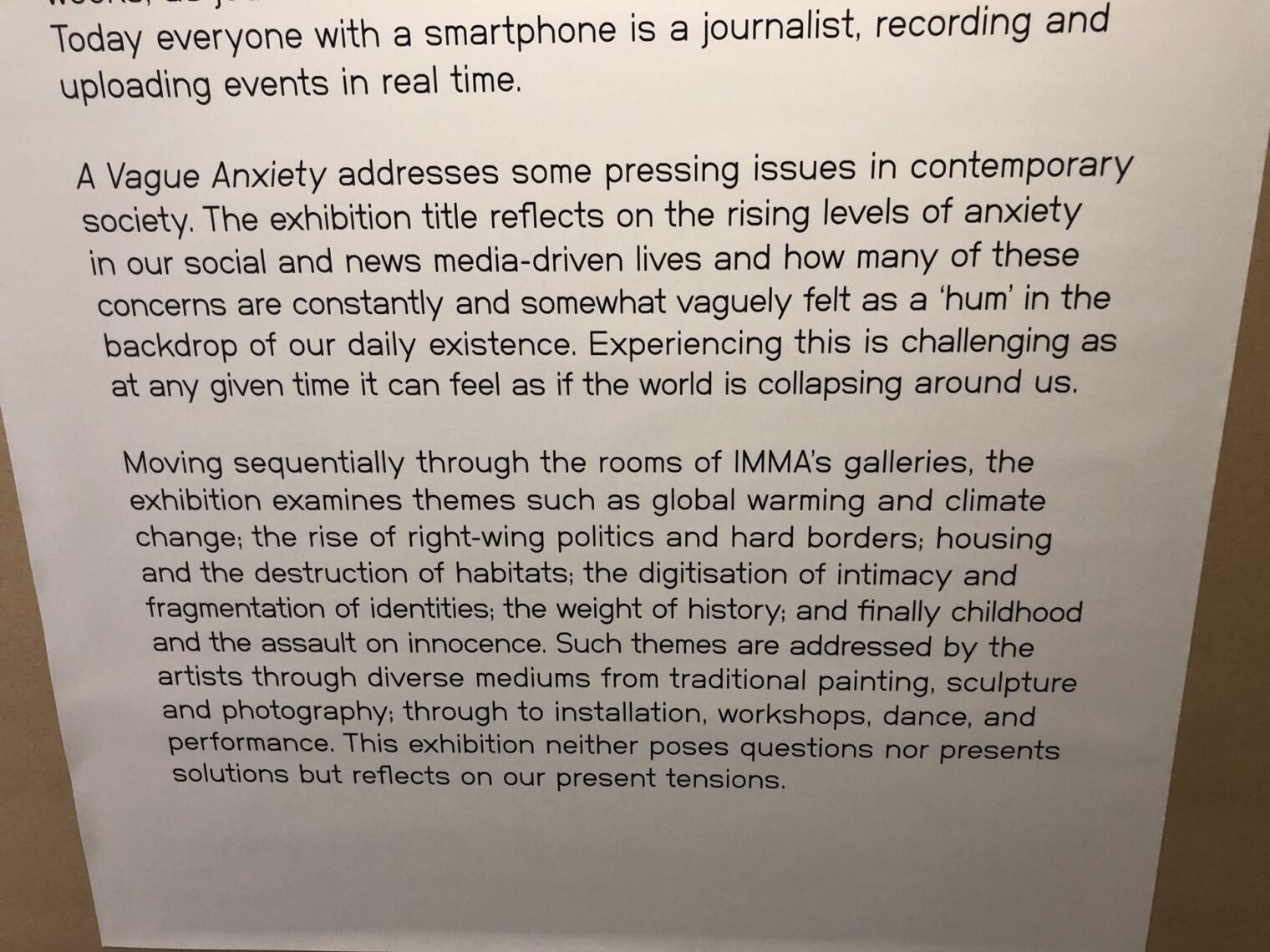
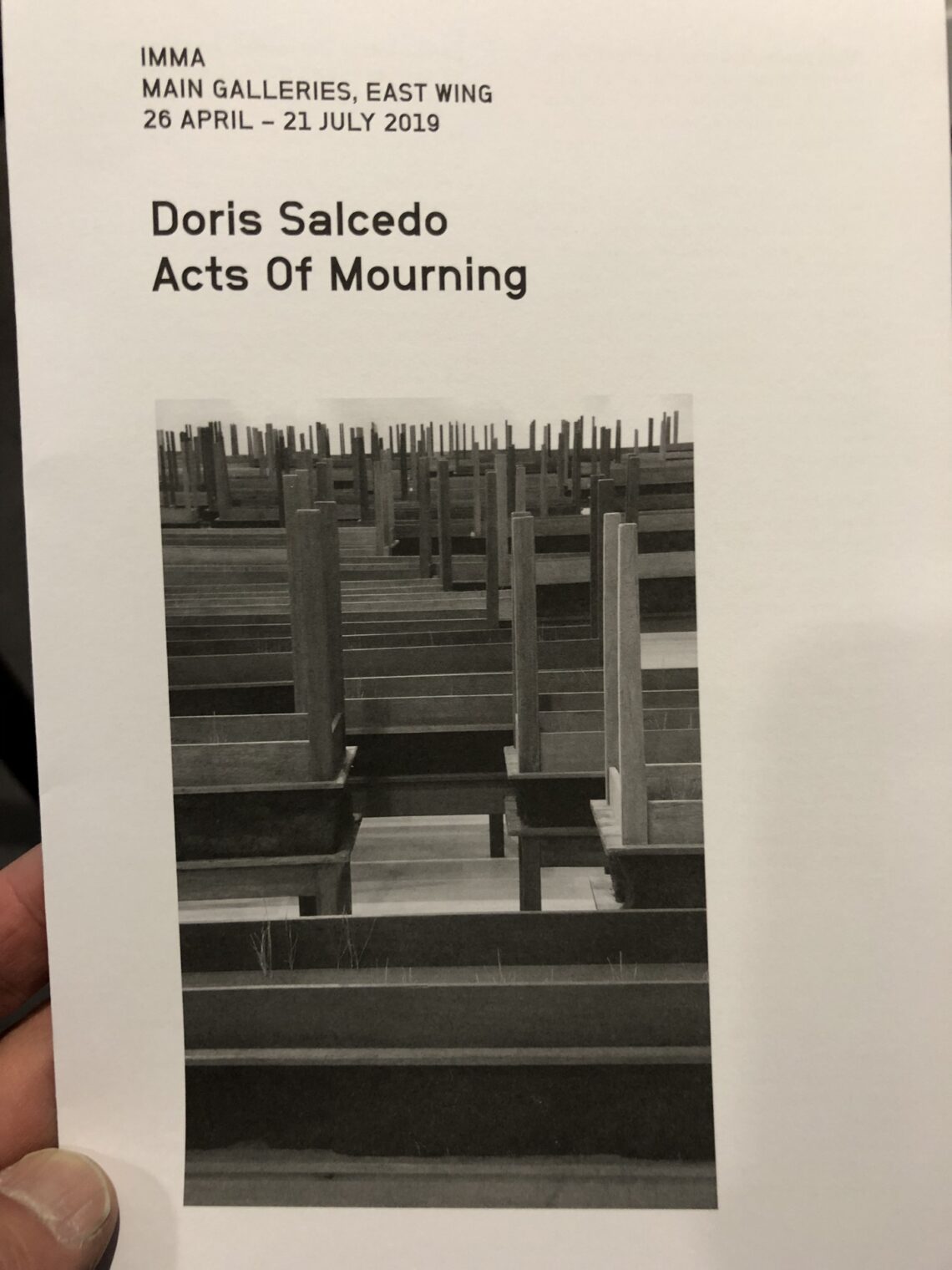
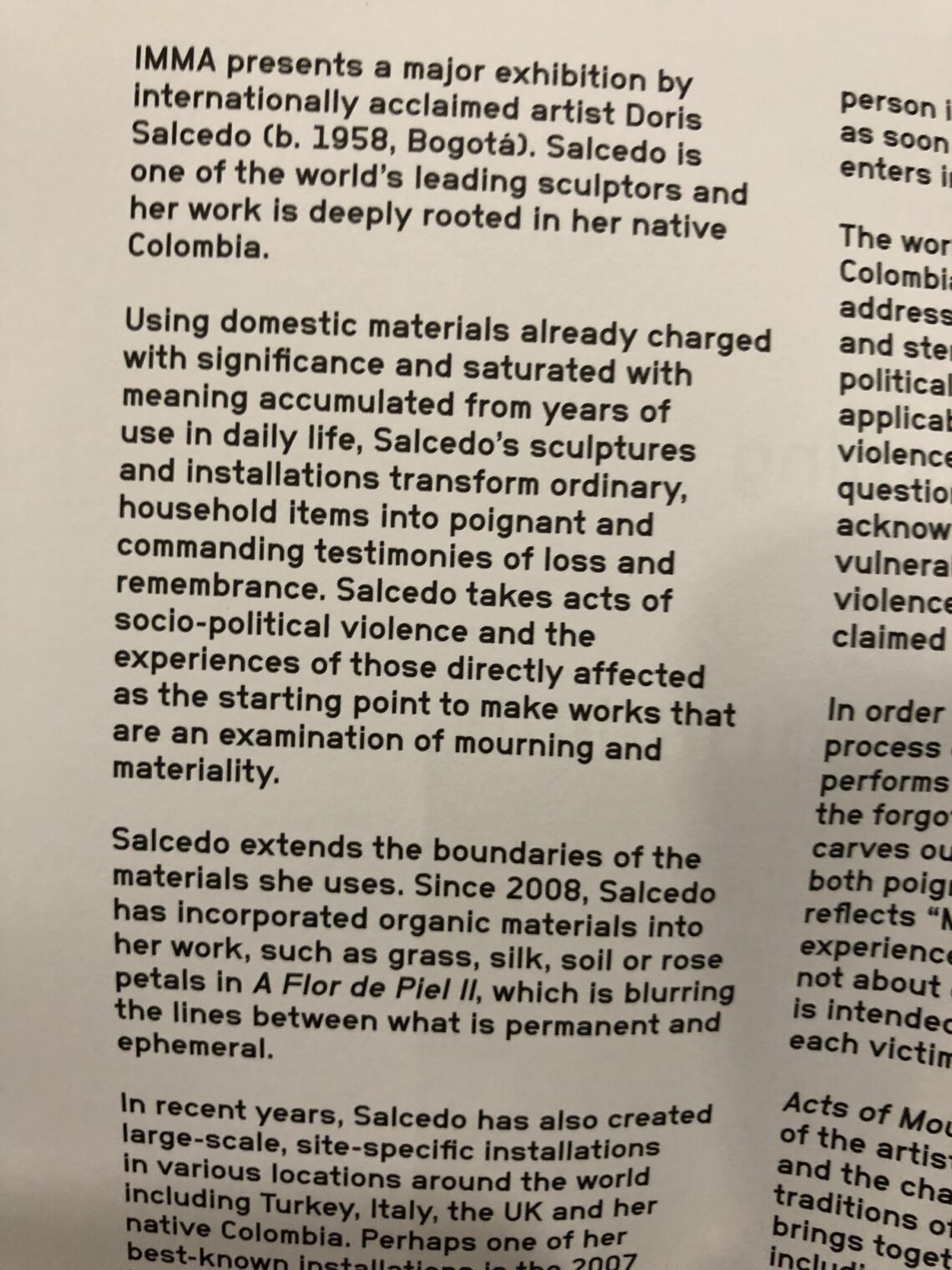
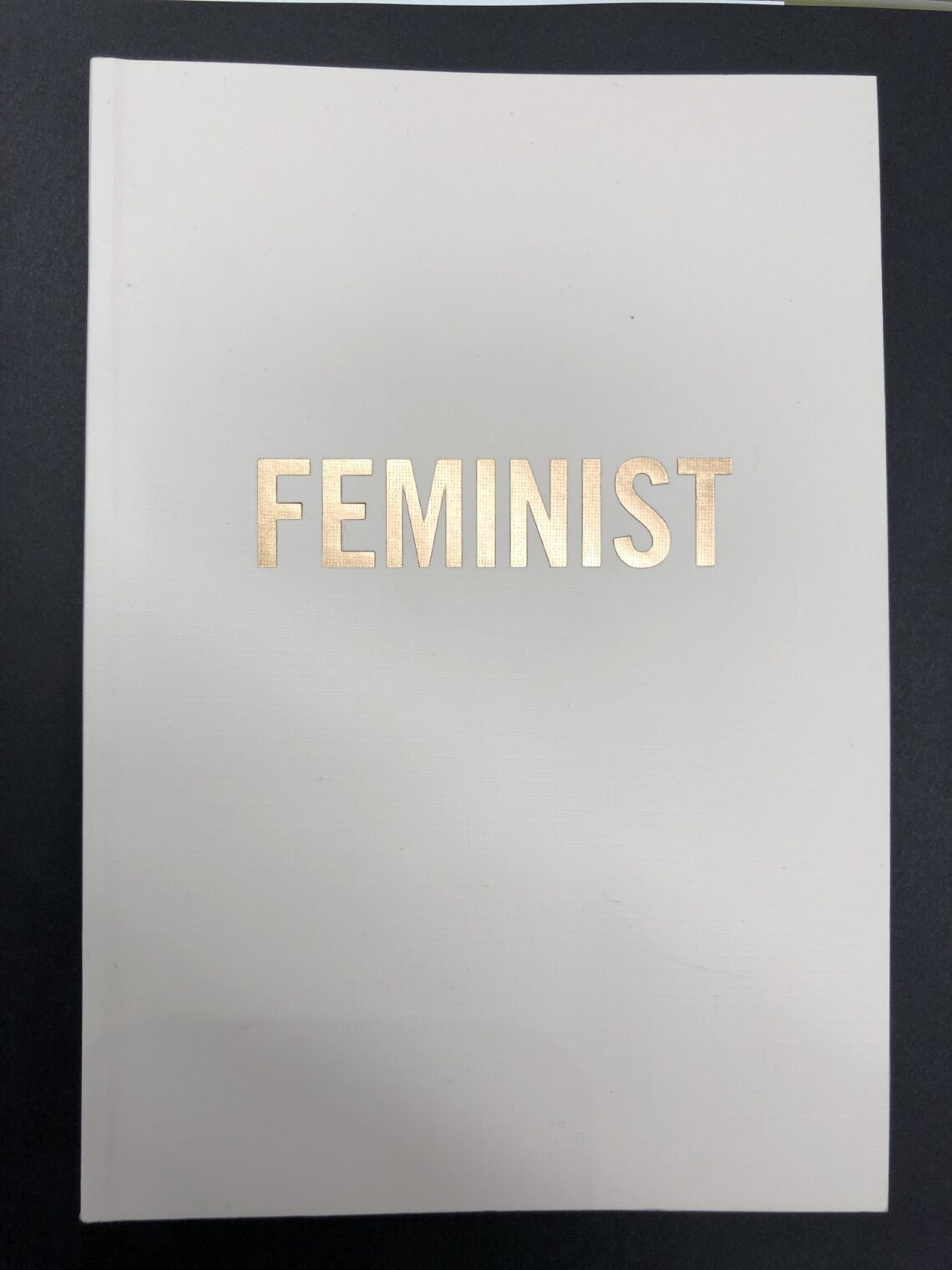

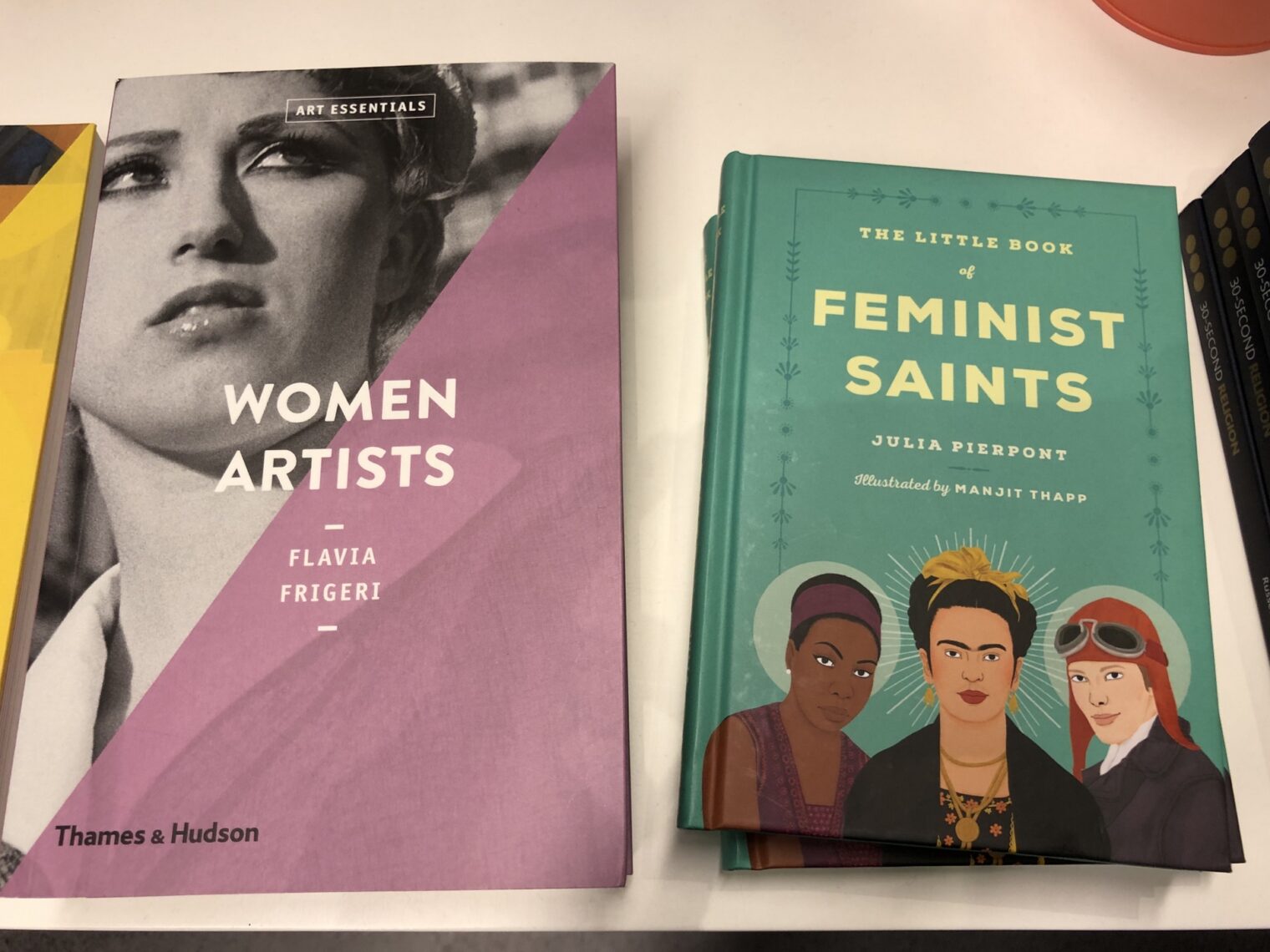
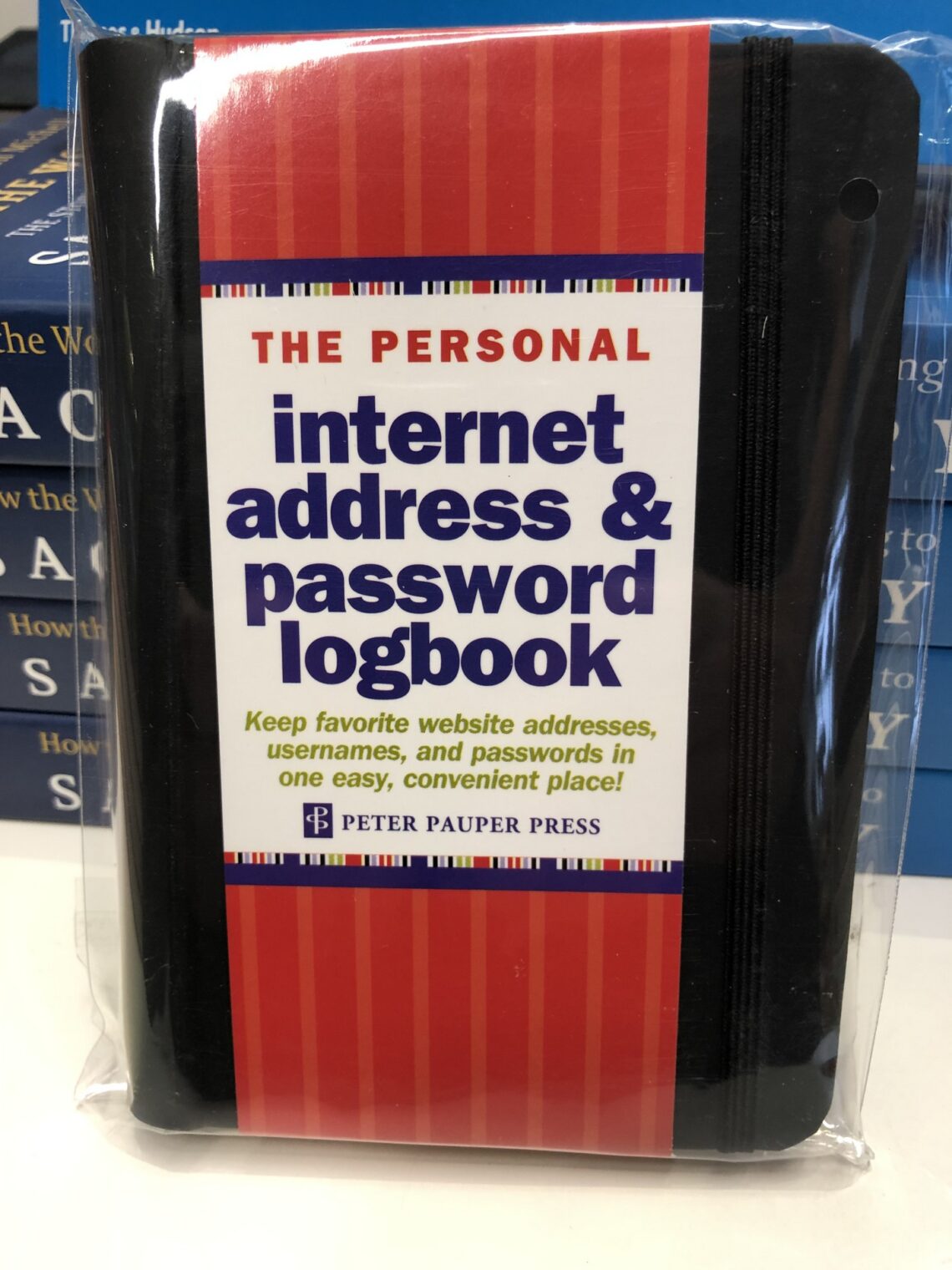
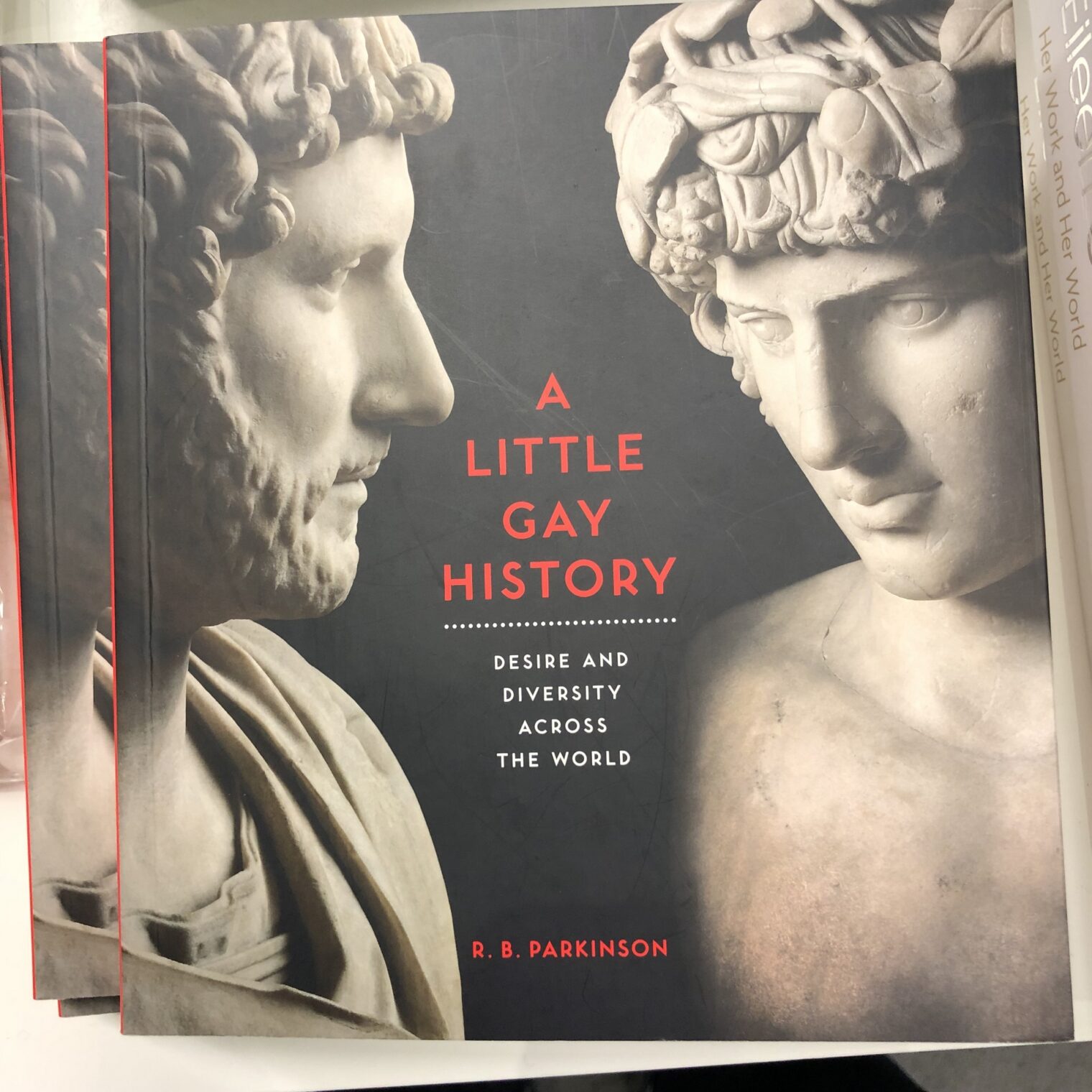
“Is it too soon to start asking what we could do to save lives if we invested coronapanic-scale money on something other than coronapanic?”
No, it is too late, because piles of money have already been spent.
Nothing is going to stop the Honda minivans from running lions over. They’re minivan maniacs.
I worked in Carmel when they started putting in the roundabouts. They immediately improved traffic flow. The four-way stops they replaced (at first, replacing stoplights came later) used to back up for a mile or more during rush hour and that went 100% away with roundabouts. I’m a fan.
Every time I’m at a 4 way stop or traffic light here, I wish I was back in New Zealand where traffic circles are everywhere.
A great idea! Sedona, Arizona has gone in hard for traffic circles on their main thoroughfares.
They are great. Traffic really moves well and I’d guess much safer than an intersection.
Truckee, CA also has at least one that I’ve seen.
We could eliminate all driving-related deaths, if we just classify them as covid-related deaths instead (it worked for flu-related deaths, which are magically 0 this year!).
Automotive safety is a noble pursuit, and the people who argued that nothing could be done about the problem and personal freedoms are paramount above all else of course lost that argument to the people arguing for better vehicle design, airbags, and seatbelt laws. If there are lives to be saved and traffic flow to be improved by installing roundabouts, we should be doing that.
I want to note though that automotive accidents kill ~37,000 people per year in the US (down from ~54,000 in the early 1970s when we only had 2/3rds the population we do now!), the flu is thought to typically kill somewhere between ~11,000 and ~95,000 Americans each year (over the last decade), and we’ve had ~159,000 coronavirus deaths this year so far. So infectious disease is actually the bigger problem, even in a non-coronavirus year (if the flu statistics are to be believed: you probably know several people who’ve died in car crashes but might not know any who’ve died of the flu). Even before coronavirus, I used to tell people that the flu kills about as many people (at least in the 2017–2018 season, which I guess was unusually bad) as car accidents and gun deaths combined (2/3rds of gun deaths in the US are suicides).
> the flu is thought to typically kill somewhere between ~11,000 and ~95,000 Americans each year
The flu kills a few hundred people per year. The “95,000” number is from a computer-model estimate of “possible flu-related deaths”. In 2001 only 257 death certificates listed the flu, and only 18 were positively identified as true flus. “The (flu vaccine) manufacturers were telling us that they weren’t receiving a lot of orders for vaccine,” Dr. Glen Nowak, associate director for communications at CDC’s National Immunization Program, told National Public Radio. “It really did look like we needed to do something to encourage people to get a flu shot.” So the CDC started using the loose term “influenza-related”, and created a computer-model to estimate the largest possible number.
source: http://archive.is/DbmUk
Ryan-
You’re assuming all lives of all ages have equal value, which they functionally and legally do not. Younger people with more life ahead of them are proportionally killed by auto accidents more than viruses, thus more life-years are lost that way.
Sam
We are in the midst of a traffic fatality pandemic! The lockdown must continue!
Because the US is so large, so many miles driven are travelled on controlled access highways, energy scales with velocity squared, and airbags help prevent fatalities at lower speeds, a large fraction of fatal accidents in the US happen on highways – and a surprising number involve only a single car leaving the road due to drunk, drowsy, or distracted driving. So, it is wrong to take the lower fatality statistics per vehicle mile in low speed urban areas with roundabouts vs. traffic lights and assume that this ratio represents potential lifesaving for overall driving fatality statistics for the US.
The situation is different in other countries. For example, in Japan, pedestrians make up a large fraction of lives lost.
Another way to reduce traffic deaths is to eliminate toll booths. Toll booths kill lots of people every year and it’s completely unnecessary because toll booths are unnecessary. Will never happen (too much revenue) but it should.
They were eliminated in CT after an eighteen wheeler plowed into a line of stopped traffic in CT in 1983. Not to worry, tolls will soon be reinstated in a boothless manner. First we need to spend $15 M on a study to justify the foregone conclusion and then a few hundred million on infrastructure to harvest the tolls.
If we eliminate traffic lights we eliminate all the ticket revenue for going through an orange light. And we can’t have that.
As for toll booths I-90 on NY border is stupid funny the old people pod structure is still there twenty feet further is one of the new overhead toll apparatus that can read Ezpass or take a plate picture at any speed.
At this point I believe all the toll booths have been eliminated in MA in favor of the ezpass / camera system, which I can attest works perfectly on a car without a transponder. You get the bright orange invoice in the mail within a week after being photographed by the camera, even in bad weather at 70MPH it has zero problem reading your plate. In that instance you wind up paying considerably more than the toll because of added fees associated with the State having to mail out the paper invoice.
And of course, instead of just handing some change to a toll collector, the State now knows that you were driving down the Mass Pike on your way to wherever at 3:22:20:14 p.m. doing 69.4 mph.
The stated rationale for all this was, of course, to save money and speed up traffic flow. It may have accomplished the latter, but somehow MA DOT is more underfunded than ever if you listen to politicians proposing new taxes. In the bad old days toll collectors could earn over $100,000 a year!
Toll booths vanish as of 2018, toll workers have to get new government jobs:
https://pioneerinstitute.org/blog/after-the-toll-booths-where-did-the-toll-collectors-go/
Taxes go up in 2020:
https://www.wbur.org/news/2020/03/05/transportation-tax-gas-ride-hailing-uber-lyft-rental-car
“It has become clearer by the day that the need for more transportation revenue is real and it is immediate,” said Rep. Aaron Michlewitz, chair of the House Ways and Means Committee, during debate. “Whether your constituents come from a district that is considered urban or rural or anything in between, it is undeniable that our transportation system is not meeting the needs that our citizens expect and deserve.”
Of course, we all know the infrastructure is gradually being put in place (including vehicle telemetry data) so that tax-by-the-mile schemes can be implemented as soon as possible. I expect those within the next five years. Connecticut is already working hard on it. In 2016 they tried the pilot program with federal money, but some godforsaken Republicans objected, and it was temporarily shelved. By 2021 that’s not going to be a problem any more, and tax-by-the-mile is going to come roaring back.
The more electric vehicles on the road, the greater the urgency will be.
https://www.govtech.com/budget-finance/Connecticut-Joins-States-in-Exploring-Mileage-Tax.html
The big problem with traffic circles in urban environments is that they create “islands” in the middle of cars driving in circles and so basically the real estate inside the islands is unusable for anything other than decorations and foliage. This is either a feature or a bug depending on how you view automotive traffic in general.
Here in Massachusetts, see the “Shared Streets and Spaces” program. Basically, $5 million dollars (this year, just getting started) with most of the money going to Environmental Justice Communities.
https://patch.com/massachusetts/medford/medford-receives-funding-outdoor-dining-school-access
Here’s the Mass.gov website:
https://www.mass.gov/service-details/program-overview-shared-streets-and-spaces-grant-program
The inspiration for the Shared Streets and Spaces program is really Tactical Urbanism, which took off in the US under Mike Bloomberg’s administration in NYC, when he agreed to close big parts of Broadway. That turned into Vision Zero.
https://www.city-journal.org/html/ungridlocked-13472.html
https://www1.nyc.gov/content/visionzero/pages/
If you want to learn more about it and apply for a grant in your own town, just visit the website:
http://tacticalurbanismguide.com/about/
From page 13 of the TU guide:
“In 2015, more than 35,000 people died in U.S. traffic crashes and millions more were injured. Of these fatalities, a disproportionate amount were sustained by children and people of color. Today, you are 3X more likely to die in a traffic collision than by a firearm.
THIS IS TOTALLY UNACCEPTABLE.”
Here’s the book:
https://issuu.com/streetplanscollaborative/docs/tu-guide_to_materials_and_design_v1
If you go to Page 99, you can see the Lincoln Hub in Chicago. Basically the idea is that you just keep extending the sidewalks out until there’s no place to drive cars anymore.
In Norway, roundabouts are very common. They almost always work a lot better than traffic lights. When drivers are accustomed to them, they can be made really small. In my neighbour town, a couple of them are just tiny cobblestone circles in the middle of a street crossing.
https://goo.gl/maps/SbfDZd73VTkwJeRQA